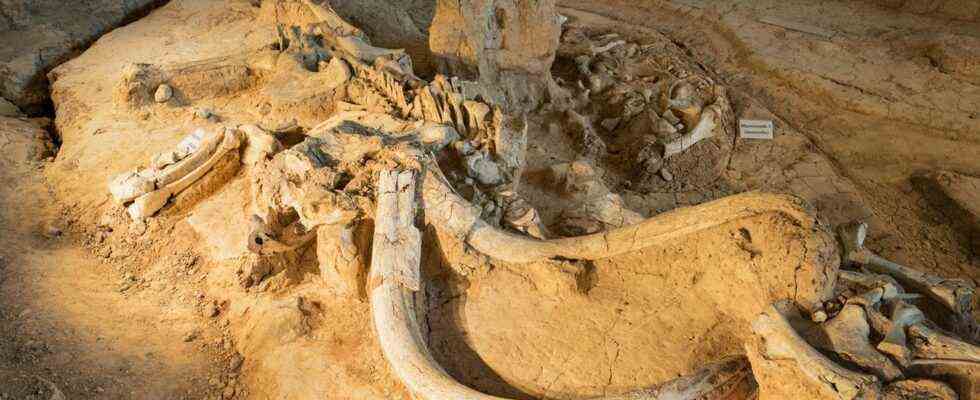England
Archaeologists find the place where Neanderthals once held a mammoth feast
A mammoth skeleton (symbolic image)
© Arpad Benedek / Getty Images
Scientists rarely experience something like this inside: In England, Neanderthal tools were found next to five gigantic mammoth skeletons.
Even more than 160 years after its discovery, much is still unknown about the extinct prehistoric Neanderthals. Did they talk to each other? Did they have a religion? Did they build boats? Even where and how they lived is still only roughly known. A spectacular find in Great Britain now sheds light on a small but significant piece of the Neanderthal world. Two amateur archaeologists came across a stone ax from the Neanderthals in the Cotswolds – an idyllic region in south-east England.
Sally and Neville Hollingworth were out looking for fossilized artifacts, of which there are many in this area. The couple counted on fossilized snails – however, they did find a stone ax that the Hollingworths, with their prior knowledge, directly assessed as very old and important. They informed the authorities. A team of archaeologists was sent to the site. The experts confirmed that it was a very old find – this ax was once used by Neanderthals. About 200,000 years ago.
Archaeologists made other finds
The team began to examine the surrounding areas in order to find more traces of the former residents. And they came across more than they thought possible: The researchers found five mammoth skeletons. It was the remains of two adults, two adolescents and one young animal. The bones are so old that they did not belong to the now well-known woolly mammoths, but to their ancestors, the steppe mammoths. The males of this species could reach a shoulder height of 4.70 meters and were thus the largest representatives of the mammoths. Steppe mammoths died around 200,000 BC BC, the specimens found are possibly some of the last animals.
The archaeologists put the age of the mammoth bones at 216,000 years. Now they are investigating tracks that indicate that the animals were hunted by humans and then cut up. “It is possible that the Neanderthals stored here, hunted these animals until they were stuck in the swamp, and then enjoyed a gigantic buffet. Or they found them in the swamp and thus got practically free food,” explains Professor Ben Garrod von the University of East Anglia.
The find is extremely significant
The find is significant and the experts are accordingly euphoric. “If the laboratory results confirm that the cuts on the bones were made by human hands, this place would be one of the oldest scientifically investigated places where Neanderthals slaughtered mammoths,” says Ben Garrod. A documentary is now being shot about the find, which is to be broadcast in England for the New Year.
Source: “Daily Mail”

